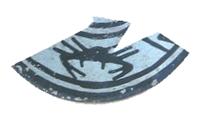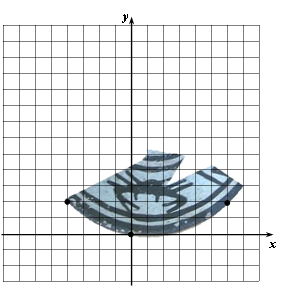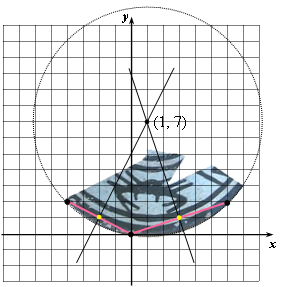An Application
The idea of finding the circumcenter of a triangle using perpendicular bisectors of its sides has an important application in archaeology:
While on an archaeological dig, Fred uncovered a piece of a circular dish. He wanted to know how big the original dish was, so he needed to determine its diameter.

To do this, he laid the piece on a coordinate plane with gridlines spaced 1 cm apart, and found three points on the dish's edge were at coordinates (0, 0), (–4, 2), and (6, 2).

These three points determine a triangle with those vertices, so he found the equations of two perpendicular bisectors of the sides, set their y-values equal to find their point of intersection, and then was able to find the radius as the hypotenuse of a right triangle from that point to the origin:

The line through (0, 0) and (–4, 2) has slope –2/4 = –1/2, so the perpendicular bisector has slope 2. The midpoint has coordinates (–2, 1), so the equation of the perpendicular bisector is y – 1 = 2(x + 2) which simplifies to y = 2x + 5.
The line through (0, 0) and (6, 2) has slope 2/6 = 1/3, so the perpendicular bisector has slope –3. The midpoint has coordinates (3, 1), so the equation of the other perpendicular bisector is y – 1 = –3(x – 3) which simplifies to y = –3x + 10.
If we set the y's of these two lines equal to each other, we have:
2x + 5 = –3x + 10
Solving this we get x = 1. We can use either line's equation to find y, and we get y = 7. So the point (1, 7) is the center of the circle, and we can now find the radius since it is the distance from the center to any of the three vertices of the triangle.
The distance from (1, 7) to (0, 0) is
![]()
or about 7.07 cm.
Therefore the diameter is about 14.14 cm.
